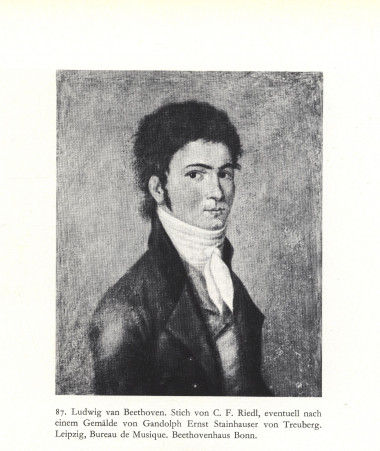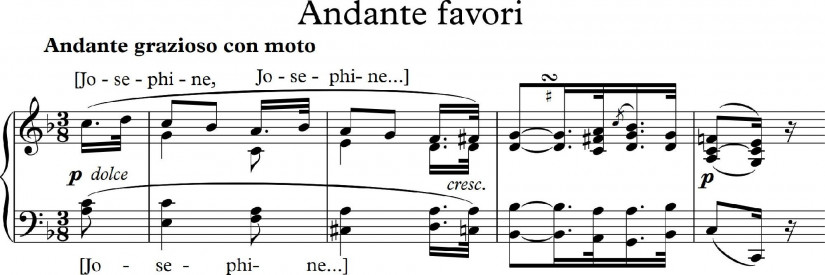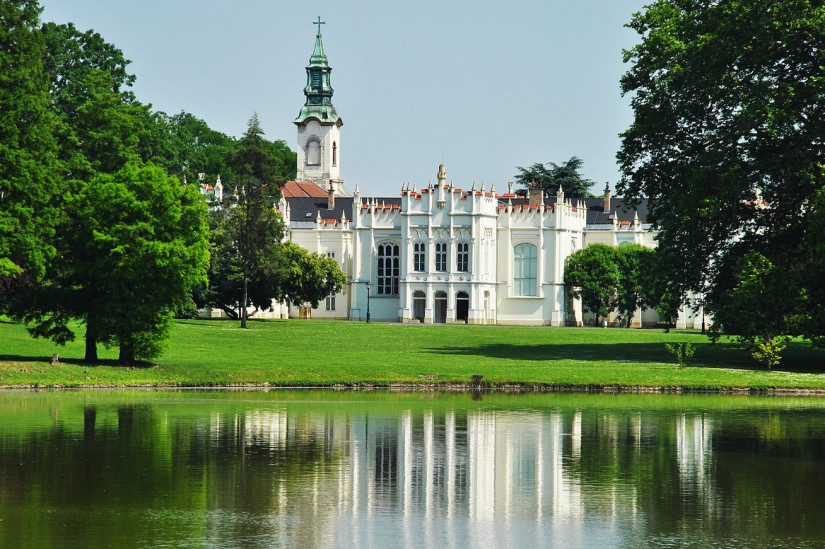“Beethoven has to be learnt” – or Ludwig and Josephine, in three acts
In May 1799, Baroness Anna Seeberg and her daughters left Budapest for Vienna to take piano lessons from Ludwig van Beethoven, the 29-year-old up-and-coming artist of the day. The innocent trip resulted in lifelong friendships and a fatal love affair. Dr Judith Bajzáth, head of the visitors centre at the Agricultural Research Centre, talks about the details.

Young portrait of Beethoven
How did Beethoven first meet the Brunsvik family?
The memoirs of Therese Brunsvik offer a few details about this great romance. Anna Seeberg, wife of Anton Brunsvik Jnr and Therese’s mother, had heard Beethoven’s trios for piano and, understandably, wished to see the promising artist become her daughters’ music instructor. On a friend’s advice, she took a personal trip to Vienna in the company of the 24-year-old Therese and 20-year-old Josephine. The visit from the three ladies made such a great impression on Beethoven that he kept giving the young women free piano lessons for three weeks. Therese later gave a detailed account of his teaching methods.
The Brunsvik family were at the peak of their fortunes in the second half of the 18th century. How much do we know about them?
Anton Brunsvik Snr, the head of the family, acquired the Martonvásár property through an estate swap in 1770, on about the date Beethoven was born. A government bureaucrat, he received the title of Count in 1775, which helped him move closer to the circles surrounding Maria Theresa. His daughter-in-law, Anna Seeberg, served as lady-in-waiting to the Empress, who would become godmother to her child, Therese. The marriage of the sensitive Anton Jnr and the practical-minded Anna produced four children, all of whom received an education in aesthetics and the arts. Therese and Josephine played the piano, Franz studied the cello, and Karoline played the guitar and the harpsichord. Providing a wide-ranging artistic education was quite common among the elite of the 18th century, and the fortepiano, predecessor to the modern-day piano, served as the central element in the salons. Apart from inheriting their father’s artistic spirit, the Brunsvik children emulated his love of freedom and open mind, something that was rare indeed in those days, especially for women.

Brunszvik Josephine
Let’s come back to Beethoven and the Brunsvik girls. What happened after the piano lessons?
At the end of the Vienna trip, Beethoven dedicated a composition to the Brunsvik sisters, perhaps the first sign of his attraction to Josephine. However, the composer was not the only man in Vienna to be captivated by her. When the three women visited Müller’s Wax Museum, Count Deym, its ageing owner, who had opened the museum under the pseudonym Müller, fell in love with the fragile and mesmerizingly beautiful Josephine at first sight. Anna Seeberg accepted a marriage proposal from the purportedly rich aristocrat on behalf of her daughter, and, despite Josephine’s frantic pleadings, she forced her into the marriage. Sadly, it was only later that Count Deym’s past was fully revealed: following a near-fatal duel, he had fled the country, had lost his fortune, and now looked to the Brunsvik family as an opportunity to become a wealthy man again. Josephine and Joseph Deym were married in Martonvásár and then moved to Vienna, where the jealous count kept his young wife almost under house arrest until their first child was born.

Ferenc Brunszvik
How did Beethoven relate to the other Brunsvik children?
He respected Therese very much, calling her “esteemed, highly esteemed” in the only remaining letter written to her, and dedicated to her his Sonata in F sharp major, Opus 78, which music historians describe as a perfectly structured composition. He loved Franz, the young heir of the family, as a brother, evidenced in five of his letters. They became lifelong friends in the Deym château, where the composer often came to visit. Thanks to Franz’s intervention, Beethoven was invited to give a concert with Giovanni Punto, a noted horn player of the age, in the castle theatre of Buda in honour of Alexandra Pavlovna, wife of Palatine Joseph. Franz was to be present at the debut performance of Beethoven’s Ninth in 1824.
To commemorate the 1800 concert, an international festival is regularly held there under the aegis of the Buda Castle municipality. How did the audience receive Beethoven’s concert in Buda?
The paper Magyar Kurír (Hungarian Courier) covered the event: Beethoven was introduced as “a famous musician called Beethoven” and was described as a passionate pianist. It was thanks to this successful concert that he was invited – also through Franz’s mediation – to compose a piece for the opening ceremony for the Pest Municipal German Theatre in 1812, which we now know as the overture to a play about Hungary’s King Stephen the First. After Haydn, audiences were surely surprised by the temperamental Beethoven, “they had to learn” his style and musical devotion. Interestingly, female pianists were considered to be the most authentic Beethoven interpreters in those years, such as Franz’s wife, Sidonia Just, who was to give several Beethoven evenings after the composer’s death.
After their child was born, Count Deym permitted his wife to hold musical evenings in their château and invite the best-known musicians of the time, including Beethoven himself – which was no coincidence. How did all this shape their lingering attraction?
Josephine bore another three children to her husband, who was 30 years her senior and whom she lost in 1804. A few months later, Beethoven was giving daily piano lessons to the widow, and the surviving 14 love letters testify to the fact that their relationship matured into reciprocal love. The composer would have liked to marry Josephine, but the social gap between them meant his plan was out of the question. Their romance was in full bloom from 1804 to 1807. In 1808, the widowed Josephine and her sister Therese set out on a journey to find a boarding school for her sons. The trip, which became a lengthy tour of Europe extending to 1809, was an occasion for Josephine to meet Baron Christoph von Stackelberg, who would later be her second husband. Just like the one before, this marriage too broke down within a year because of the man’s financial situation and quarrelsome nature.
Was Beethoven musically inspired by his passion for Josephine?
Some music historians maintain that several of his compositions were inspired by the woman of his desire, such as the Adagio movement of the Waldstein Sonata, which we now know as Andante Favori. The rhythm of the basic motif of the piece perfectly corresponds to that of the name Josephine. Another example is Fidelio, in which Beethoven portrays the ideal woman, virtuous and faithful to her husband, perhaps Josephine herself. Their correspondence reveals that he intended his To Hope for Josephine. It is another telling sign that Beethoven composed his last piano sonata in 1821, the year the woman died.

How many times did Beethoven visit Martonvásár and Hungary?
The first time he came was in May 1800, followed by a visit to the estate and its proprietor Franz, probably in 1806. Legend has it, and his secretary Anton Schindler noted too, that his sonata Appassionata, Opus 57, which he dedicated to his bosom friend, was completed at Martonvásár. It is widely held that he probably visited in 1803 and 1809, but there is no written evidence to that effect. He gave concerts in Buda, Krompachy (Korompa/Krompach), Eisenstadt (Kismarton) and Bratislava (Pozsony/Pressburg) – towns which were all part of Hungary at the time.
What happened in the last act of the drama between Ludwig and Josephine?
That is where the real mystery begins. According to the official version, their intimate relationship ended in 1810, but a new enigma arose after Beethoven’s death. The composer’s travel case was opened in 1824, and a secret drawer yielded two portraits and three draft love letters. One of the portraits was of Therese Brunsvik, the other of Giulietta Guicciardi, the woman who inspired the Moonlight Sonata. She was a cousin to the Brunsvik sisters, and Beethoven had instantly fallen in love with her at one of the Deym soirées in Vienna, as we know from the Brunsvik sisters’ letters. This is not necessarily a surprise, as Beethoven was instantly enamoured of any girl he met that was around the age of twenty. Musicologists still argue about the identity of the “Immortal Beloved”, i.e. the addressee of the three drafts: Giulietta, Teresa Malfatti (the muse for Für Elise), Antonie Brentano (wife of a Frankfurt merchant), Countess Erdődy or Josephine.
The drafts bear no address or date, but they are written to one single, immortal and fatal woman, and in them the author describes a blissful, consummate love affair. All the letters reveal is that the first was begun on the morning of Monday, 6 July, continued in the evening and finished the following morning. This leads one to the conclusion that it was written in Teplice (Teplitz) in 1812, and the meeting took place in Prague. Beethoven researchers have discovered that Antonie Brentano was staying in Prague at that time, so there is every indication that she might have been the Beloved. However, she was married and expecting a baby, so that assumption runs counter to Beethoven’s respect for marriage. Furthermore, Josephine’s diary contains a note that she wanted to go to Prague in July 1812 to see her “Beloved”, and nine months later almost to the day she gave birth to her daughter Minona. The little girl was said to be different from her siblings, as she had a Mediterranean complexion (as a young boy, Beethoven had been given the nickname “Spaniard”) and was known for her exceptional gift for music.
The whole truth, however, is shrouded in mystery and can only be guessed at. Without a doubt, Beethoven was a true romantic hero as much in his character and career as in his art: his societal and private tragedy – that he could not marry the lady of his dreams – was primarily caused by his low birth.
Anna Unger

A martonvásári Brunszvik-kastély


